The best places to go fossil hunting in Britain
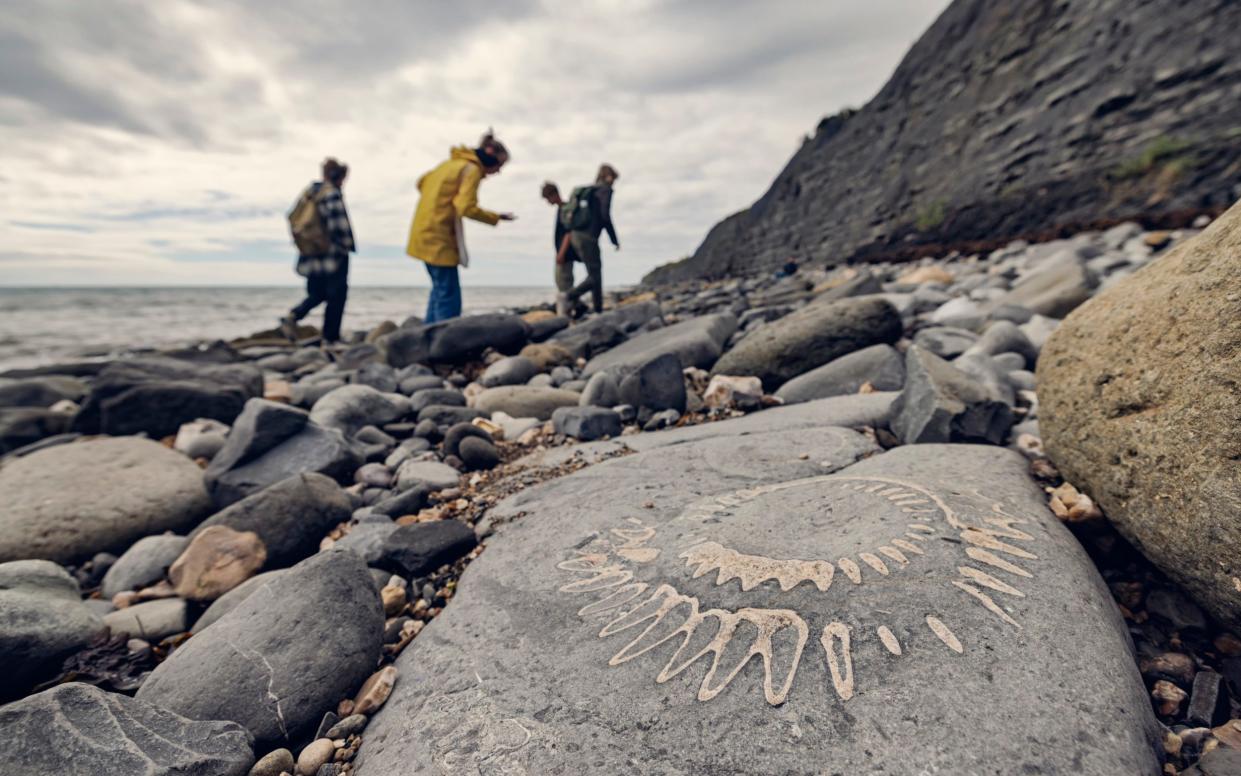
News that an 11-year old girl, Ruby Reynolds, found an important fossil proves that anyone can make historic discoveries if they are willing to get out there and look. The fossilised bone, found on a Somerset beach in 2020, was recently identified by Dean Lomax, a palaeontologist from Manchester University, as coming from a species of giant marine reptile new to science. Ruby, now 15, helped name the prehistoric creature Ichthyotitan severnensis, or, “giant fish lizard of the Severn”. The species could reach lengths of 82ft.
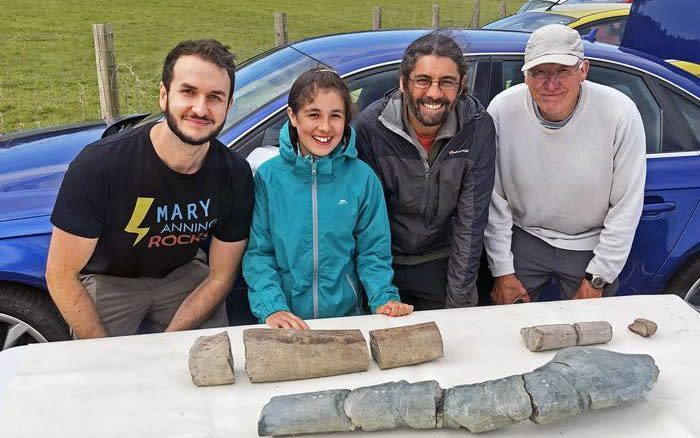
Britain is home to some of the best beaches for fossil hunting. The 96-mile-long Jurassic coast of Dorset and Devon, the Isle of Wight (also known as “Dinosaur Island”) and the Yorkshire coast are hotspots. Quarries – when accessed safely – are like fossil amphitheatres; their layers of rock stripped back to reveal prehistoric treasure.
Here, we’ve dug up five of the best fossil hunting locations in Britain.
Compton Bay, Isle of Wight
The Isle of Wight is “one of the best locations for finding dinosaur fossils in the UK”, says Prof Paul Barrett, a dinosaur researcher at London’s Natural History Museum. Some 130 million years ago, this island was a wetland of swamps where herbivorous dinosaurs foraged.
Twenty fossil dinosaur species have been found, and counting. For such a small area (147 square miles), the diversity of dinosaurs is the best in Europe. You may also find remains of animals that came later – such as a hornless rhino – as well as flint tools from prehistoric human residents.
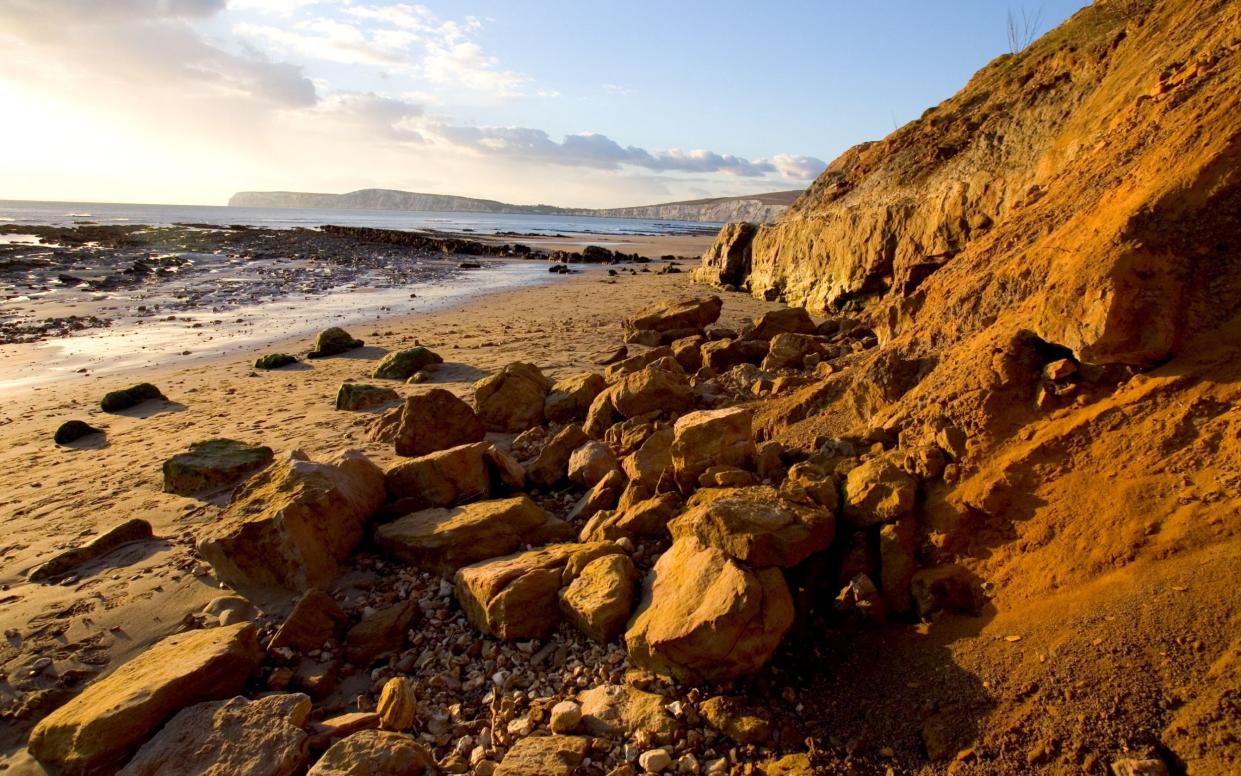
The south-west of the island, with the oldest Cretaceous rocks, is the best spot for fossil hunting.
National-Trust-owned Compton Bay, backed by low, grass-topped multi-hued cliffs, is a beautiful sandy beach with cliff-top car parking and beach access via steps. An ice cream van is your only option for food or drinks. At the bottom of the steps, turn left and 380 yards further on you find boulders that are casts of footprints of three-toed ornithopods. You may need an expert to point them out.
The National Trust offers hour-long guided fossil walks with a local operator, Wight Coast Fossils, for (£5/£3) – your take-home finds could be fragments of fossilised dinosaur bones or teeth (wightcoastfossils.co.uk).
Best find? The skeleton of polacanthus, an armour-plated dinosaur found in 1979. You can see it in London’s Natural History Museum.
Crail, Fife
Rocks here date from the Carboniferous period, 335 million years ago. There are fossilised tracks of what looks like a four-wheel drive on the foreshore boulders. These are the trackways of an enormous giant centipede, up to two metres in length. Such finds are known by palaeontologists as ichnofossils or “trace fossils”, the term given for fossils that are not bodily remains but rather marks left behind by animals. Smaller fossils that you may find to take home include tree bark, roots and coprolite – fossilised (shark) poo. You may need a geologist’s hammer to open pebbles. Wear protective goggles.
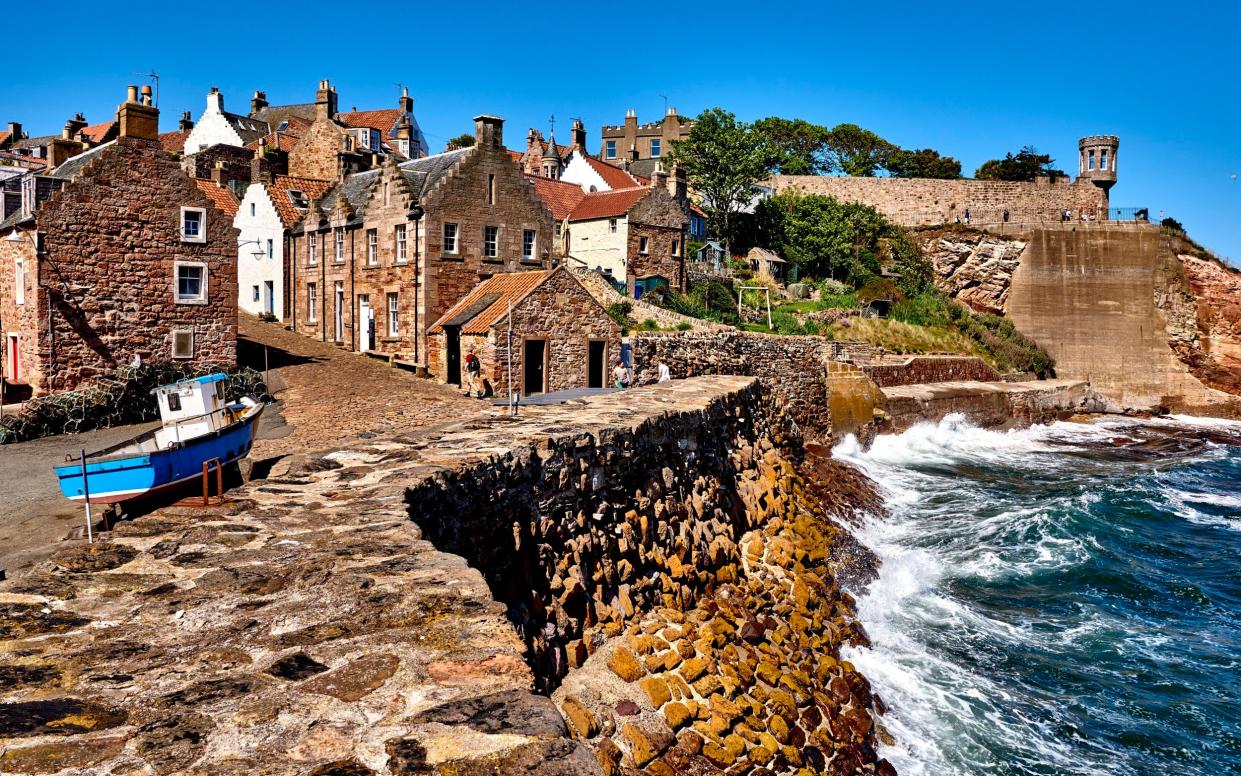
Crail Harbour Gallery and Tea room is a characterful café with sea views (01333 451896; crailharbourgallery.co.uk) .
UK Association of Fossil Hunters occasionally runs guided fossil walks at Crail and other locations around the UK (ukafh)
Best find? Hard to beat those track marks of the giant centipede.
Boggle Hole, Yorkshire
A one-mile hike south of Robin Hood’s Bay on the Cleveland Way footpath, a ravine descends to a building just yards from a former smugglers’ cove. This is Boggle Hole Youth Hostel with its cosy Quarterdeck cafe and outdoor seating where you can admire your beach finds of Jurassic ammonites of the Asteroceras obtusum species. There are also ichnofossils visible in a platform of Redcar mudstone, including Thalassinoides, the fossilised burrows of crustaceans, looking like complex railway maps. These are for viewing only; do not try to dislodge material from the cliff.
As with all fossil hunting locations, Boggle Hole is best explored after storms, which not only dislodge new material from the cliffs but also scour sand away from the shale beds.
YHA Boggle Hole sometimes organises guided fossil walks (£5 per person) for family groups in school holidays (01629 592700; yha.org.uk). Email bogglehole@yha.org.uk to request.
Yorkshire Coast Rocks leads fossil safaris at Boggle Hole and elsewhere on the Yorkshire coast. A private three to four hour safari with a scientist costs from £165 for up to six people. Alternatively, join one of their public walks for £24 for adults and £12 for children (07816 278287; www.yorkshirecoast.rocks).
Best find? New dinosaur footprints – stegosaurus, theropods and sauropods – revealed near Whitby this year.
Lyme Regis, Dorset
With its tilted strata, meaning you walk a million years in a mile, the Jurassic cliffs of Lyme Regis were the birthplace of palaeontology in the 19th century with Mary Anning’s many fossil finds. Britain’s most complete dinosaur, scelidosaurus, was also found here. Soft, storm-lashed cliffs are constantly disgorging easy-to-find treasures onto the beach, such as ammonites, belemnites and gryphaea, or “devil’s toenails”, a type of extinct oyster species.
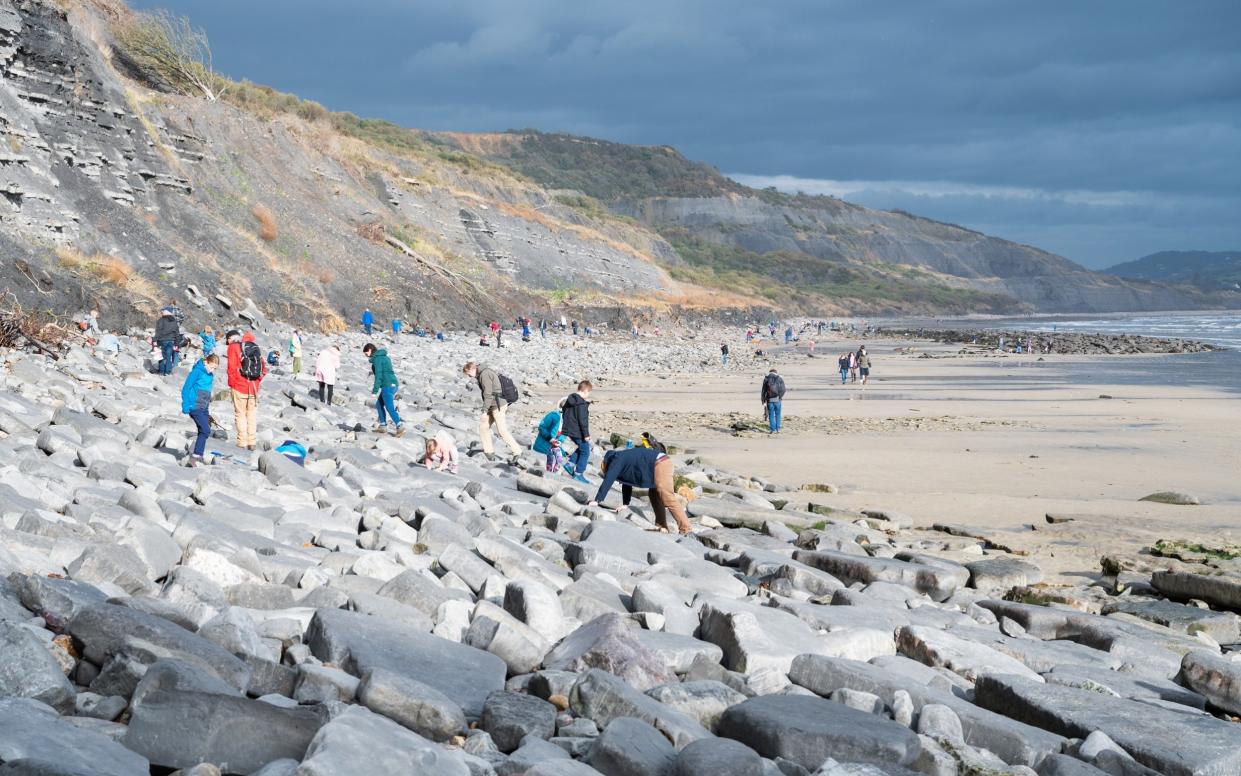
Rubbish from the town’s historic dump, in use from Victorian times until the 1970s, is also tumbling beachward. Surprisingly perhaps, finding human detritus assists fossil hunting. Heavy items such as old pen knives and nails get washed together by tides and here, too, you will find fossils dense in iron pyrite – shiny little ammonite jewels of “fool’s gold”.
Afterwards, head to town and uphill to the Alexandra Hotel for a cream tea al fresco with harbour views (01297 442010; hotelalexandra.co.uk).
Lyme Regis Museum leads three-hour fossil-hunting walks that cost £14.75 for adults and £8.75 for children (01297 443370; lymeregismuseum.co.uk).
Lyme Regis’s annual fossil festivaltakes place on June 8-9 with talks, walks, films, boat trips and more (fossilfestival.com).
Best find? There are many contenders, but this year marks 200 years since Mary Anning described the first complete skeleton of a plesiosaur.
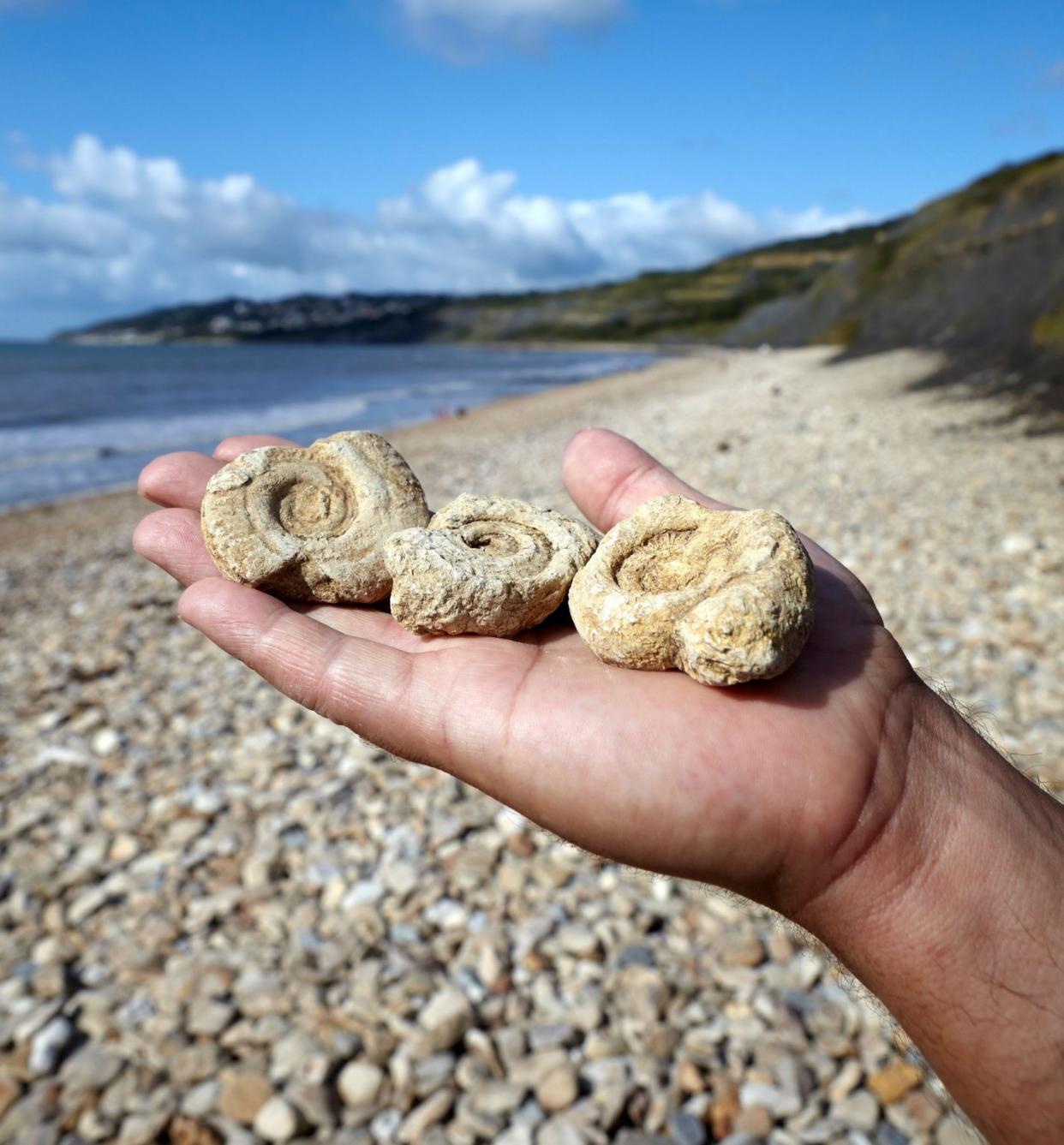
Upper Gilwern Quarry, mid-Wales
On private land on the edge of the Brecon Beacons, this former quarry offers guaranteed finds of Ordovician trilobites of the genus Ogyginus (they look like giant beetles), up to 469 million years old. A local extinction event, possibly a volcanic eruption raining down ash, killed and preserved tens of thousands of the creatures at what was probably a breeding site in a shallow sea.
Guests who stay at accommodation belonging to the landowners have more-or-less exclusive access to the quarry (educational groups occasionally visit). A shepherd’s hut on-site has far-reaching views. Another option is two “treehouses” that each sleep seven, located 10 minutes’ drive away. Your party gets half a day’s fossil hunting at the quarry included in your stay.
The Hundred House Inn is a 10-minute drive away with open fires and reasonably priced food (01982 570 446).
Upper Gilwern Quarry shepherd’s hut (07741 068 402; uppergilwernquarryhut.co.uk) and Rhiw Wood Treehouses (07741 068 402; rhiwwoodtreehouses.co.uk).
Best find? Erm, that would be a trilobite.



